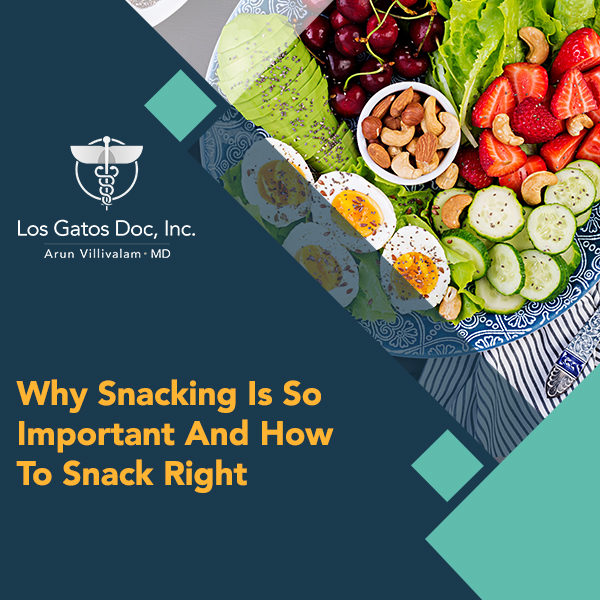Snacking often gets a bad rap but it is one of the most important meals of the day. Most people have at least one snack if not more per day.
The key to maintaining an optimal weight and health lies in what you snack on. Most people are least mindful of their snack habits when hungry.
Common wisdom says that dinner must always be light. The only way to ensure that is to have a wholesome snack between lunch time and dinner time.
Snack time is a crucial step most people miss out on and hence, fall off any sustainable fitness plan.
But first, why is snack time so important?
The Science of Snacking
Our body produces cortisol, the primary stress hormone responsible for several functions in our body including metabolism, immunity and balance.
Our cortisol levels rise in the morning so we can start the day with renewed energy and drop in the evening so we can sleep well at night.
When we don’t eat a wholesome meal during snack time and kill our cravings with coffee or tea, our body gets into a “flight or fight” mode and produces more cortisol instead of reducing it in the evening. It leads to overeating during dinner time, poor sleep, slow digestion, thyroid problems, and insulin sensitivity that can lead to diabetes and other chronic conditions.
Our stomach starts growling around 2 hours after our last meal. So, the ideal time to snack is around mid-morning and in the evening.
The Art of Snacking
There is nothing wrong with snacking as long as you get it right.
A lot depends on the reasons you snack, what you snack on, how often you snack, and how you fit in snacking in your overall fitness plan.
If your reasons for snacking are boredom, distraction, a craving for taste, and so your choices are cookies, cake, candy, fast food, sugary drinks, or coffee, you will eventually gain weight in the long run that can potentially lead to health problems.
But if your reasons for snacking are to maintain your energy and cortisol levels, and your choices are on the lines of fruit, nuts, seeds, popcorn or milk, then you will maintain a sustainable fitness routine.
The right kind of snacks provide you with extra nutrients and energy for several hours, helping curb appetite and overeating in your next meal.
Various snacking recommendations from public health organizations advise limiting snacks that offer little nutrition and high in sugar, sodium and saturated fat. The key to artful snacking is to choose healthy food options that satisfy your hunger and keep your calorie count low.
So, you can see there is a science and art of snacking. And there are serious health implications if you are not snacking correctly.
The Bad Effects of Snacking
Too much snacking can interfere with the intake of your regular meals. It might make you skip a main meal and lose out on important nutrients.
The wrong kind of snacks such as highly processed foods that are high in sugar, salt and fats but low in nutrients can alter your taste if consumed regularly. It may make you crave unhealthy foods and make bad food choices leading to weight gain and even chronic conditions.
Snacking not caused by hunger leads to a higher calorie intake. Emotional eating or eating under boredom and stress, can make you have higher calorie snacks that have lots of sugar and fat.
According to the 2020 Food & Health Survey from the International Food Information Council, people under the age of 35 and parents with children under 18 years snack more than usual. They also reported that American children have been prone to bad snacking habits with foods high in calories but low in nutrients.
As per a survey conducted by the National Health and Nutrition Examination, our children are consuming foods that are high in calories, carbohydrates, and sodium but low in calcium, vitamin D, fiber, and potassium.
Marketing plays a huge role in promoting fast food and has led to the proliferation of a bad snacking culture in our society. Nearly $14 billion is spent on advertising per year, and more than 80% of it promotes fast food, candy, sugary drinks and other unhealthy snacks.
How To Snack Right
Snacking right can complement your overall fitness plan. Here are our top suggestions to get your snacking on track.
- Reflect on your snacking habits and patterns
Make a note of when you tend to snack during the day. And what drives you to snack? Is it hunger, anxiety, stress or boredom?
If it’s hunger that drives you, then it’s time to plan your snacks as you plan your meals. But if it’s stress or boredom that drives you to snack, you should consider some mindfulness strategies at home such as meditation, journaling, or take the help of a medical professional.
- Plan your snacks
Take the time before the start of a week to plan for a healthy snack time in the week ahead.
Choosing wholesome foods for snacks that contain fiber, protein and whole grains leave you more energetic and satisfied. Depending on your cravings, here are some snack options for you.
- If you’re craving something sweet, then you could have fresh fruit with honey and greek yogurt or peanut butter dip, or dates, or popcorn with drizzled dark chocolate.
- If you’re craving something salty, you could have a slice or cube of cheese, roasted whole grains or pulse, a handful of nuts, or bread with nut butter.
- If you’re craving something crunchy, you can have cucumbers, carrots, or any veggie stick with hummus, yogurt, and cottage cheese or any salad with fruits, vegetables, nuts and seeds, or whole grain crackers or popcorn.
Limit your snack options to under 250 calories per snack. A healthy snack option would be just enough to satisfy your hunger and boost your energy but will not interfere with your appetite for the next main meal.
While fresh fruits and vegetables are the best options, you can always substitute them with frozen versions of the same or canned fruit packed in its own juices or water and not syrup.
You can also experiment with various herbs, spices, and different recipes to make your snacks both healthy and tasty.
- Snack during regular intervals
While you keep your snacks small, healthy and under 250 calories, have a regular snacking routine that works best for your lifestyle. Make sure you are eating every 3-5 hours.
You could have one snack time between 4 PM – 6 PM, two snack times mid-morning and in the evening, or three snack times which are mid-morning, early evening, and a light snack a few hours before you sleep if you’d had an early dinner.
It’s good to have a glass of water with each snack so you feel full and don’t overeat.
We’re Always Here To Help You
Snacking right has immense health benefits including giving you an energy boost with the right nutrients, improving your brain power and clarity, and helping you achieve your sustainable fitness goals.
If you need our assistance on Lifestyle Management in Los Gatos, we’re here to help! Book an appointment and visit Los Gatos Doc today and our team will help you make positive lifestyle changes for your better health.
Disclaimer: We routinely draw upon public health resources to inform our write-ups. Information in this article may be drawn up from multiple public health sources, including:
- Centers for Disease Control & Prevention
- Medline Plus
- National Institutes of Health
- American Medical Association
- American Association of Family Physicians
- Mayo Clinic
- Family Doctor






